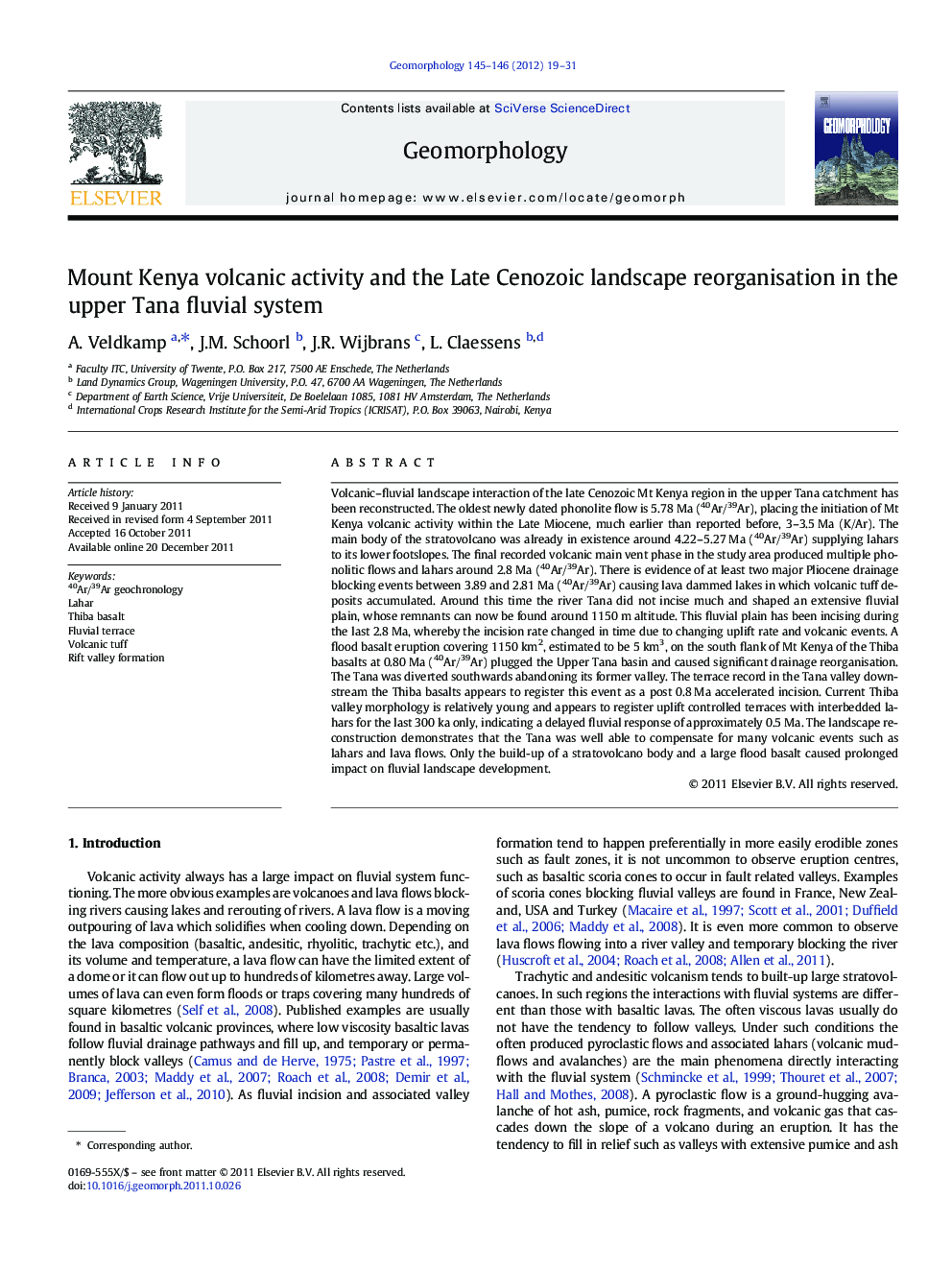| کد مقاله | کد نشریه | سال انتشار | مقاله انگلیسی | نسخه تمام متن |
|---|---|---|---|---|
| 4685278 | 1635486 | 2012 | 13 صفحه PDF | دانلود رایگان |

Volcanic–fluvial landscape interaction of the late Cenozoic Mt Kenya region in the upper Tana catchment has been reconstructed. The oldest newly dated phonolite flow is 5.78 Ma (40Ar/39Ar), placing the initiation of Mt Kenya volcanic activity within the Late Miocene, much earlier than reported before, 3–3.5 Ma (K/Ar). The main body of the stratovolcano was already in existence around 4.22–5.27 Ma (40Ar/39Ar) supplying lahars to its lower footslopes. The final recorded volcanic main vent phase in the study area produced multiple phonolitic flows and lahars around 2.8 Ma (40Ar/39Ar). There is evidence of at least two major Pliocene drainage blocking events between 3.89 and 2.81 Ma (40Ar/39Ar) causing lava dammed lakes in which volcanic tuff deposits accumulated. Around this time the river Tana did not incise much and shaped an extensive fluvial plain, whose remnants can now be found around 1150 m altitude. This fluvial plain has been incising during the last 2.8 Ma, whereby the incision rate changed in time due to changing uplift rate and volcanic events. A flood basalt eruption covering 1150 km2, estimated to be 5 km3, on the south flank of Mt Kenya of the Thiba basalts at 0.80 Ma (40Ar/39Ar) plugged the Upper Tana basin and caused significant drainage reorganisation. The Tana was diverted southwards abandoning its former valley. The terrace record in the Tana valley downstream the Thiba basalts appears to register this event as a post 0.8 Ma accelerated incision. Current Thiba valley morphology is relatively young and appears to register uplift controlled terraces with interbedded lahars for the last 300 ka only, indicating a delayed fluvial response of approximately 0.5 Ma. The landscape reconstruction demonstrates that the Tana was well able to compensate for many volcanic events such as lahars and lava flows. Only the build-up of a stratovolcano body and a large flood basalt caused prolonged impact on fluvial landscape development.
Journal: Geomorphology - Volumes 145–146, 1 April 2012, Pages 19–31